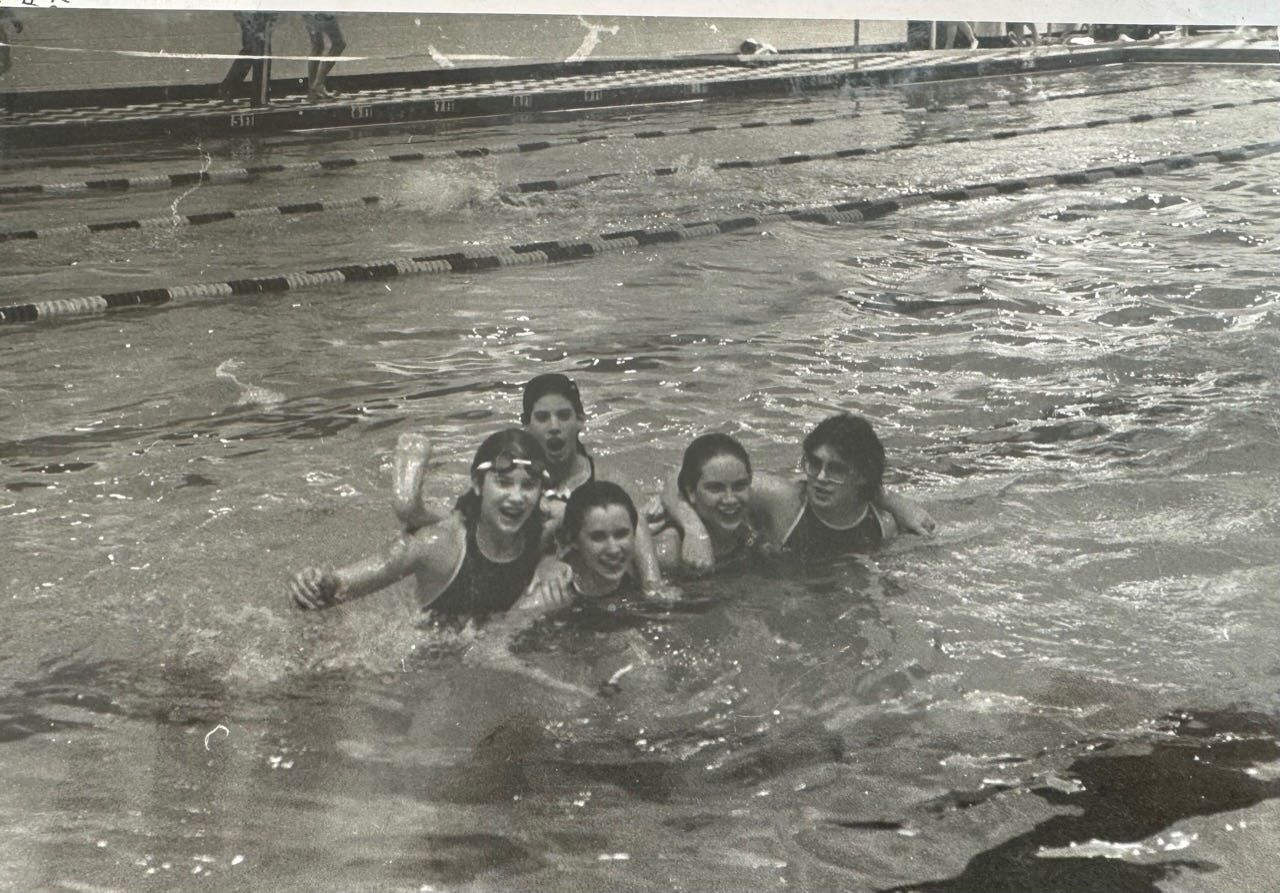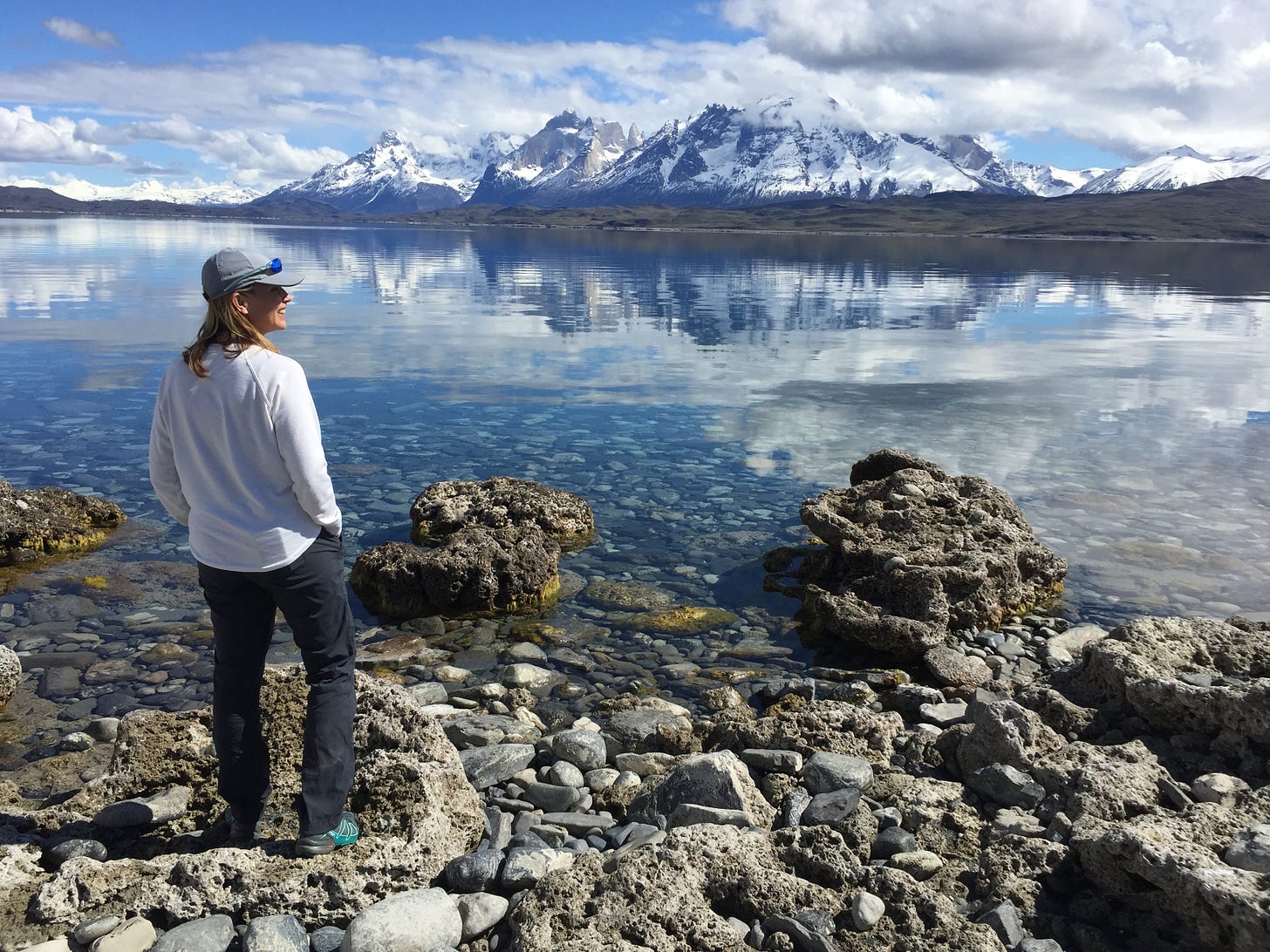The Luminist is a reader-supported publication that illuminates the pain, the pleasure, and the paradox on the path to technicolor living. If you like The Luminist and want to help spread its message, tap the ♥️ and 🔁 button to help more people find it.
I have always been an ‘observationist.’
(Thank you TL reader Stephen for giving me this great term in honor of his non-verbal son Scott after last week’s post!)
Motivated by curiosity, sure, but also a desire to hold the world at arm’s length. To protect myself from feeling. To stay in the ivory tower of my head, my intellect, my imagination. High up on my observation perch, I could take it all in yet not be drawn in. I could do life on my own terms: locked down and under control.
I filled my days with the activities that facilitated this self-containment — reading alone in my room, the distance events on the swim team (the 1650m was my fave), a career that promised financial self-reliance.
But when death darkened my door, my happy place — in my head — suddenly became a booby-trapped battlefield…
I have spent the last year trying to explain how I was able to pull myself out of the tarpit of grief.
I have successfully closed my hands around pieces of it:
Letting my family and friends support me, when all I wanted to do was hide.
Daring to believe I would feel something besides sadness one day.
Surrendering to the loss so I could look forward rather than always backward.
Taking everything way less seriously.
Being inspired by my kids.
But I think the truth is that I, like most grievers, was looking for an escape.
Time slows to a crawl in the early stages of grief. You have no hope of decreasing the pain you are in when nothing is moving, including the days on the calendar.
You’ll do almost anything to get out of your own skin, own head, own life — even just for a few seconds. To forget who you are and what has happened long enough to take another breath and maybe another step.
I’m not saying this is the best strategy for thriving after loss (in fact, I argue the opposite here), but sometimes surviving is enough.
I call those early, blurry but endless days the acute phase of grief. Like the bitter season it’s so often compared to, all internal processes shut down during this time besides the most essential. But also like winter, this is when the seeds that carry our new hope will be buried by our old hopes, which have been torn from their branches and left to decay.
How do we find a way to nourish these seeds when we can barely breathe?
Looking back, I wasn’t thinking about any of that.
Rather, I was unconsciously seeking the comfort of my favorite hiding place: the observation tower.
But the previously safe space of my mind was unrecognizable. It was like looking through a horror-house kaleidoscope — shafts of too-bright light were shining around jagged edges, illuminating stark emptiness I wasn’t ready to see, and exposing shadows in the places where I had once felt so secure.
It’s crazy the things our brains and hearts can come up with when our sanity is on the line.
I imagine the part of me that is The Observationist as a gangly blonde teen, binoculars hanging around her neck, a notepad tucked in her back pocket. You’ll notice first that this aspect of me is quiet. Second, she is curious. But dig deeper, and you’ll discover that both of these traits actually rest on a third — she values preservation of herself and her kin above all else.
The Observationist within was willing to do whatever it took to save me and my kids, even if that meant doing what scared her most: drawing me out of my skin, rather than deeper into it.
And out there, I discovered things I’d never realized before. Truths of being human, being a social creature, being yet another organism on this planet:
Looking outward at the leaves of Great Falls, I saw the piercing beauty of light cutting through the branches. I realized that while my pain was acute, glorious beauty still existed in the world, and I wanted to see it and feel it.
Looking outward at the kids, I watched them come up with strategies and tool kits to cope. I realized I could do the same in my own way.
Looking outward at my family and friends, I watched them always be there to catch me when I fell. I realized I was not alone.
Looking outward at my work, I realized that because of my brokenness, I had new insights into the pain and challenges of others. I could impact their lives, help them think differently about themselves, and turn my pain into meaning.
By looking outward to escape the pain, I saw the normal, everyday things around me in a different way.
Nothing about the world outside my skin had changed. Everything about the way I experienced it had. I could rest in that ‘radiance in dailiness’ and be utterly wowed by it, when before it was just like blahblahblah — boring, uninteresting, the farthest thing from eye-catching.
It brings tears to my eyes to realize that the medicine for my healing was right in front of me all along. I just had to change the lens. Well, the lens got changed for me. But I sure as hell leaned in. I started with seeing nature in a new way, then people in a new way, and finally myself in a new way.
I realize some woman on the internet may not be able to affect your heart of hearts, but if I could, I would reach in and unlock your knowing of how accessible this is.
Personally, I had to have my guard ripped down like the scenery of a play on closing night to understand the beauty and help and healing that is everywhere. But do we all have to have our initiation into the mystery be so violent?
Could we find a way — without being borderline deranged by grief — to drink in, breathe in, bathe in the wonder that surrounds us?
Because even now, I am so connected to it. My synapses got rewired and those babies aren’t going back (thank god). Before, it was for solace. But now my connection with the majesty of earth and life and people and plants and kindness and hope and rays of light coming through the dirty window fills me with power.
Long story short, I did not make a conscious decision to move on with my life.
Day after day, I looked around me for something to distract me. In doing so, I accidentally found myself surrounded by endless clues.
It wasn’t easy but I didn’t have to figure it out on my own. I just had to recognize all the ways that life, including the life within yours truly, was built to heal after loss.
In observation,
Free & paid subscribers receive the exact same weekly content in their inboxes every Saturday morning. (The newsletter, vulnerable, personal, embarrassing stories, book recommendations, and whatever gifs have made me giggle.)
Considering upgrading to help myself and my editor Leona dedicate more time to The Luminist and support our current non-profit of choice: Experience Camps for grieving kids.
If you resonated with this post and want more, check out these:
#6: The radiance in dailiness. Grief taught me to see the magic in the “ordinary”. Let me show you an easier way.
#14: Things will be great again. Giving each other permission to believe in the future while honoring the pain of the present.
#17: Mystery is my religion. We can’t escape chaos. But we can reframe it.
#31: Not all progress feels like progress. Sometimes it feels like limbo.
#54: Making life out of death. Anniversary(s).





![Time lapse of Snow melting [HD] on Make a GIF Time lapse of Snow melting [HD] on Make a GIF](https://substackcdn.com/image/fetch/$s_!ev-5!,w_1456,c_limit,f_auto,q_auto:good,fl_lossy/https%3A%2F%2Fsubstack-post-media.s3.amazonaws.com%2Fpublic%2Fimages%2Fb77e8c8f-76bf-4c8c-8272-7eab37e3ed8a_320x180.gif)




Thank you Stephen! Thanks for sharing your challenges and being in community with all of us.
Grief is this lead ball that sits in my gut! It does not ever get smaller or go away! As I carry it with me; I have learned to grow around it!❤️💔🙏